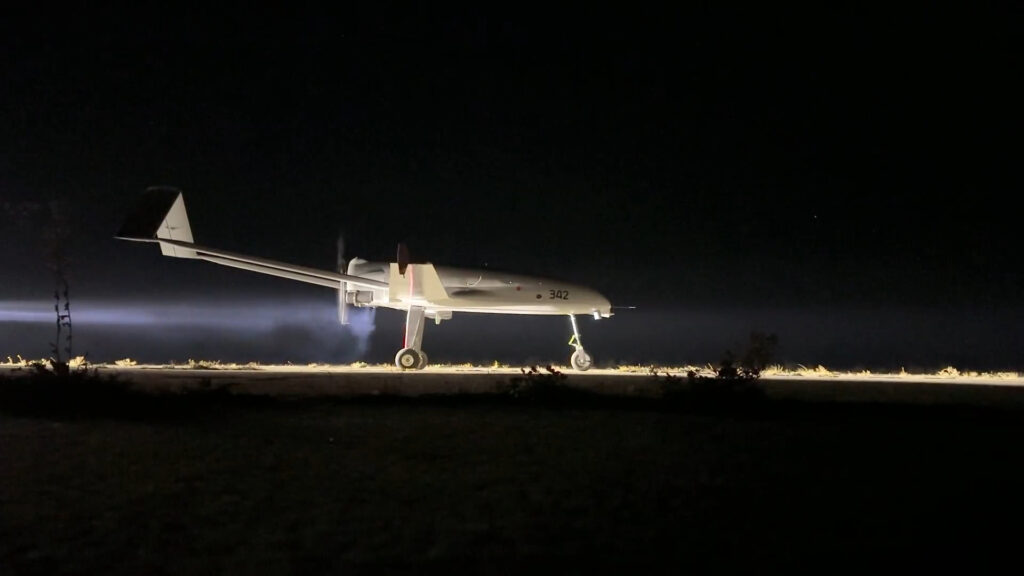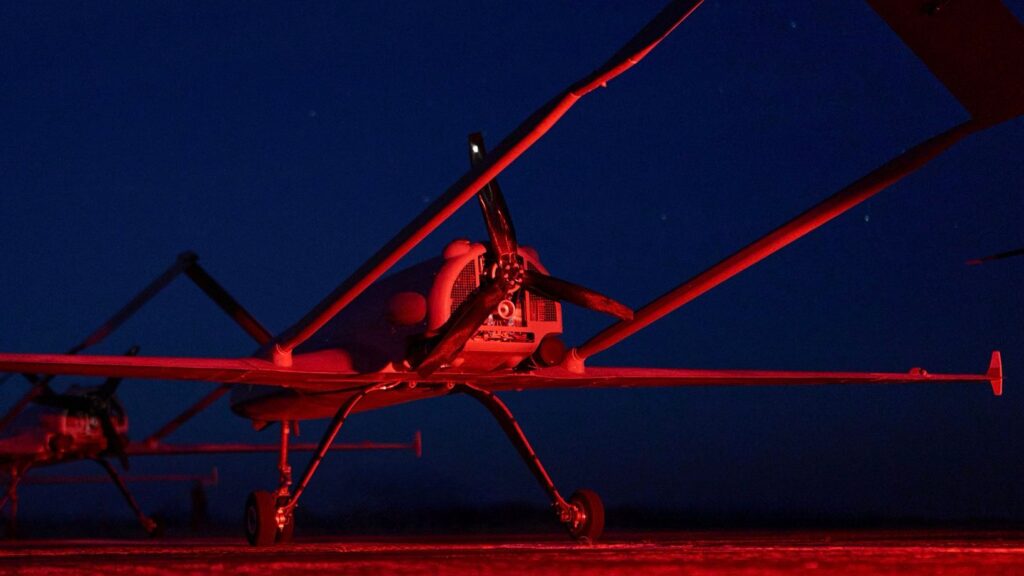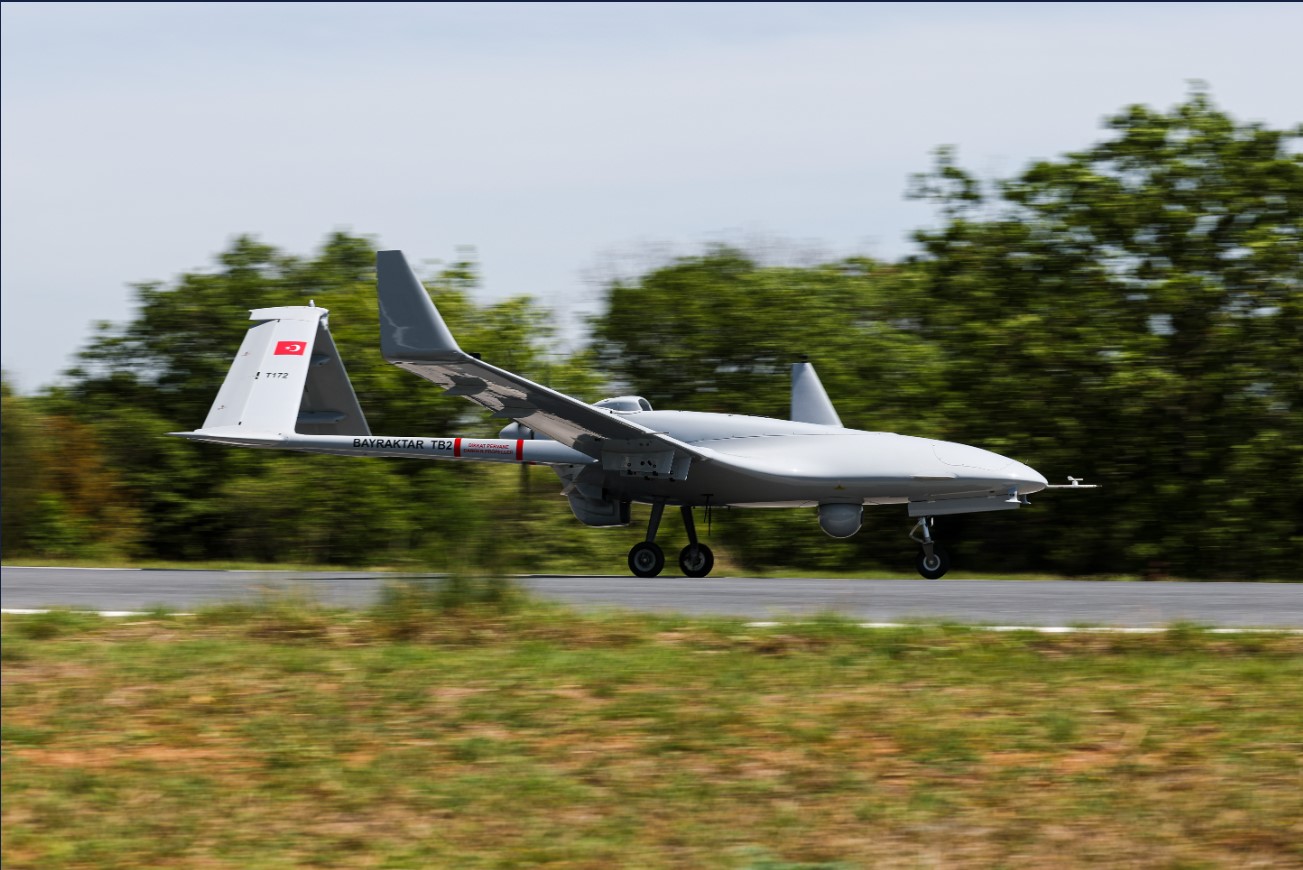Germany is reportedly paying for the production of 500 Ukroboronprom AN-196 Liutyi (Furious) long-range attack drones. While Germany continues to withhold Taurus cruise missiles despite Ukraine’s clear need for the missiles, the Furious drones are a nice consolation.
Amid a wider military buildup under its new government, which formed in May, Germany plans to pump at least $100 million into Ukraine’s expanding deep-strike campaign targeting factories, airfields and other targets deep inside Russia.
The regime of Russian Pres. Vladimir Putin is clearly unhappy about the drone deal. “The Russian side had repeatedly warned that flooding the Kyiv regime with weapons only protracts the conflict,” Russian state media complained.
According to German newspaper Die Welt, the government of German Prime Minister Friedrich Merz will pay for 500 of the propeller-driven, satellite-guided Furious drones. A Furious carries a 50-kg warhead farther than 800 km. The $200,000 drone can follow a complex flight path and change altitude in order to avoid Russian air-defenses.

The AN-196 already had German connections even before Berlin’s big investment in the type. The 4-m drone sports a German-made Hirth F-23 aviation engine producing 50 horsepower. Last month, German Defense Minister Boris Pistorius and Ukrainian Pres. Volodymyr Zelenskyy confirmed Germany and Ukraine would collaborate on joint production of long-range strike systems.
Zelenskyy anticipated Ukrainian industry would build 30,000 long-range attack drones in 2025. The AN-196s are among the most capable of these drones. There are better models, such as the ramp-launched FP-1, but they’re more expensive and thus more difficult to build in large numbers.
The Furious drones have been responsible for some of the most damaging strikes on targets deep inside Russia. Before Ukraine paused strikes on Russian oil facilities this spring, bowing to pressure from the United States, the AN-196s accounted for up to 80% of hits on refineries. “For Kyiv, the long-distance drones are fundamental,” Die Welt observed.

Factory raids
More recently, Furious drones may have been behind the repeated strikes on factories that produce components for Russia’s most dangerous precision munitions.
On 23 May 23 and again on 3 July, the Ukrainian Unmanned Systems Forces struck the sprawling facility belonging to the Energia enterprise in Yelets, 250 km from Ukraine in Russia’s Lipetsk Oblast. And on 9 June, drones struck VNIIR-Progress’s factory in Cheboksary, 1,000 km from Ukraine. The Energia factory makes batteries for bombs, missiles, and drones. The VNIIR-Progress plant makes navigation units.
“Ukraine’s long-range drone campaign against Russia has been developing nicely for a long time,” noted analyst Andrew Perpetua. With more and better long-range drones, Ukraine is poised to strike deeper and harder inside Russia as Russia’s wider war on Ukraine grinds into its 41st month.
Lyutyi kamikaze drones attacking Russian military plant in Izhevsk. 1300km from the frontline.
— Special Kherson Cat ???????????? (@bayraktar_1love) July 1, 2025
This is the first time we seen the Lyutyi drone without landing gear, which suggests it has been modified for launch via catapult instead of the standard runway takeoff. pic.twitter.com/QvtSG526qk
There’s not a lot Russia can do to stop the drones. “Russia simply doesn’t have the air-defense it requires to defend against a long-term, dedicated long-range attack on its infrastructure,” Perpetua added. “And over time, it will lose defensive capabilities as they are systematically destroyed with continued—and increasingly more technically sophisticated—drone attacks.”
The escalating drone campaign can’t directly stop Russia’s own brutal bombardment of Ukrainian cities, but it can indirectly suppress the Russian bombs, missiles, and drones by disrupting production of the munitions.
A Furious drone traveling no faster than 400 km per hour with a 50-kg warhead can’t inflict the same amount of damage as a Taurus cruise missile carrying a 480-kg warhead as fast as 1,200 km/hr. But the Germans are willing to fund the drones even as they continue rejecting Ukrainian pleas for cruise missiles.





